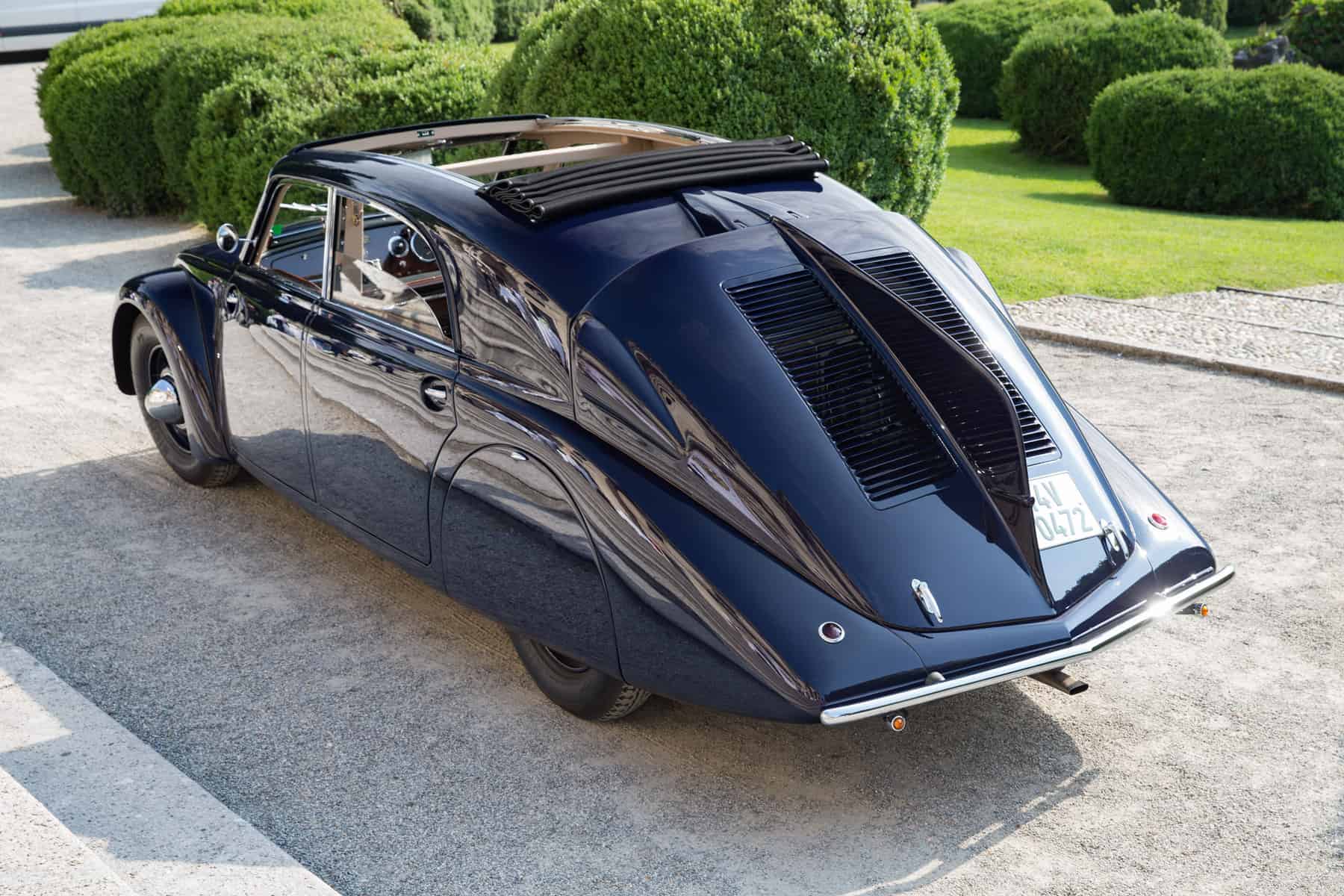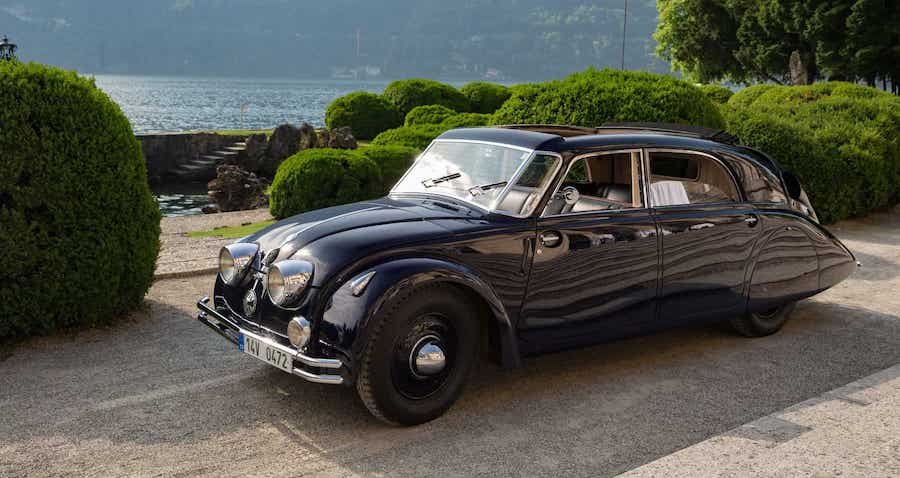Many notable innovations appeared on cars in the 1920s and 1930s.
Among these were independent suspension, greatly improving ride quality; rear engine mounting, affording better rear traction and internal packaging; air cooling of engines, removing complexity; body streamlining, reducing aerodynamic drag and thus enhancing performance and efficiency; and more equal weight distribution, making for finer and more predictable dynamics.
However, no car had embodied all of these – not until the Tatra 77.
These were combined with the backbone chassis concept of prior Tatras (wherein the need for side rails was eliminated), which had been invented by the Czech firm’s chief engineer, Hans Ledwinka, with help from his son Erich and colleague Erich Übelacker, making the 77 “different in important matters” to anything else on Earth.
Tatra’s impressively compact and light 3.0-litre V8, attached to the backbone just aft of the rear axle, was as unusual as it looked.
It had hemispherical combustion chambers, a dry sump and overhead valves, which uniquely were opened not by pushrods but by long rockers extending from a central camshaft.
The cylinders were surrounded by a jacket, open on either side to allow the entry of external air (channelled in through louvres where the rear windscreen would usually be) and exhaust emission.
Meanwhile, the saloon body’s drag coefficient was claimed to be an incredible 0.25 (the average back then was around 0.7), thanks to the 77 being one of the first-ever cars designed using a wind tunnel.
Specifically, it was the tunnel at Zeppelin. Designer Paul Jaray was a former employee of the famous airship maker and consequently had knowledge of aerodynamics lacking within the car industry.
Even then Jaray wasn’t satisfied: when the revised 77a came in 1935, it had not only a larger-capacity V8 (3.4 litres) but also yet better aero, supposedly giving a Cd value of 0.22. Oh, and a third headlight in the centre with a moving reflector!
The 77’s interior was seriously luxurious, not just in terms of roominess (three adults could sit comfortably across the rear – and even across the front in the few cars given a central driving seat) but also in how it was appointed.
This was actually a new thing for Tatra: the original idea had been a small, affordable car, but Tatra already had a regular car of this kind selling well and with a reputation for reliability, which such innovation would put at risk.
Look at the V570 prototype now and it strongly resembles another ’30s icon: the Volkswagen Beetle. Who was the visionary, who was the copycat?
Well, it was certainly no coincidence that one of Tatra’s biggest fans was the originator of the Volkswagen idea, Adolf Hitler, who declared “this is the car for my roads!” after being chauffeured in a 77.
Ferdinand Porsche would later say: “Sometimes I looked over [Ledwinka’s] shoulder and sometimes he looked over mine.” And Volkswagen paid Tatra £90k in compensation in 1965.
Back to 1935, when Autocar’s tester said of the 77: “It proved most interesting to drive, and considering the weight [about 1700kg] and the size of the engine, it had a good turn of speed and was not unduly sensitive to gradient changes.
“The riding was most comfortable, and a [demo run] at speed down a hill abounding in potholes and manholes was, to say the least, astounding. None of the four in the car would have dared to have taken any normal car over [that surface] at half the speed. Yet inside very little shock was felt.”
There’s a popular tale that Nazi officers were banned from driving commandeered Tatras during the war, due to several fatal accidents caused by tail-happy handling, but this is most probably apocryphal.
In a 1942 recollection of driving the same test car we did, Bristol aeroplane engine designer Sir Roy Fedden said that its road-holding and ability to maintain speed on a favourite twisty road had been outstanding (in fact, second only to a Mille Miglia-spec Alfa Romeo).
Things had improved further with Tatra’s 1936 introduction of the 87, a development made in far greater quantities right up to 1950.


Похожие новости

